

“Why is it yellow?” my friend asked. I was reluctantly showing her the prototype polar bear painting.
“The source had yellow,” I defended.
“Why is it yellow?” she repeated. Knowing me well, she then tried to explain in a way that I would understand: “Polar bears are white.”
Indeed my friend was quite correct: polar bears are white. But for me, the key point is that she recognized it as a polar bear! It was a win.
But let’s go back to the beginning of the story, perhaps mid last century…


Prototype 1: Yellow polar bear drowning in grape soda.
In 1950 C.S. Lewis released The Lion, the Witch and the Wardrobe, the first in the Chronicles of Narnia series of children's novels heavily laden with Christian themes.
Philip Pullman read the books as an adult, and while he appreciated the big questions the books raised, he was appalled by the answers, so he responded with his own His Dark Materials series of books starting with Northern Lights in 1995.
There are some striking similarities between the works. Both exposed young readers to overly sophisticated questions and dark subjects with the help of a plethora of fun furry friends. However, they take very different turns in that while Lewis’s work celebrates Christianity, Pullman’s work criticizes it.


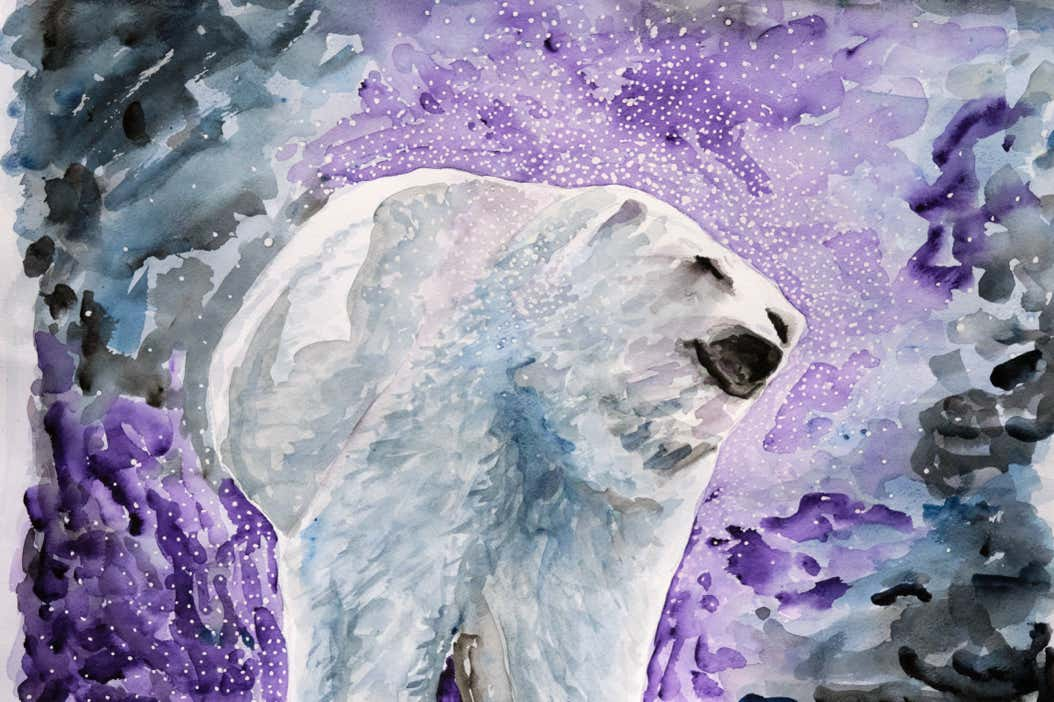
White polar bear drowning in grape soda.
The prototype bear above had a larger, partially finished sibling, which was intended to be the final painting. However, after the barely bear prototype, I had some serious rethinking to do, and the “final” version was shelved. At this point the project had been stuck for over 20 years, so what’s a few more weeks?
One day I got tired of it sitting around and just scribble-painted it to completion. I tried to make the snow denser and the background more interesting, but it didn’t turn out much better than the prototype.
On the plus side, the bear isn’t yellow.
2
0
0
1
A big year.
First,
it was a milestone year at the box office, with the release of Harry Potter and the Sorcerer’s Stone (J.K. Rowling), and the first Lord of the Rings (J.R.R. Tolkien) film. These huge hits had the studios scrambling for the next big fantasy franchise, and C.S. Lewis’s The Lion, the Witch and the Wardrobe was released in 2005. Philip Pullman’s antithesis novel, Northern Lights, was released in 2007 under the name The Golden Compass.
The Lion Witch and the Wardrobe, being a vaguely Christian family film, was successful enough in a 63% Christian United States to spawn several sequels.
The Golden Compass, on the other hand, raised concerns even before its release, and the anti-religious sentiments were toned down. The effort displeased fans of the books, and failed to appease religious leaders who called for a boycott. According to Pullman, the objections were “mainly made by people and organizations who hadn’t read the book and had no intention of reading the book because they knew they would go to hell if they did.”
Without a strong audience, the film failed to spawn any direct sequels.

it was around this time that my friend, John, took a picture of a polar bear. He described it as a “quick shot,” but I would describe it as amazing timing. John is an accomplished photographer, and if you have ever spent time in Arizona there is a good chance you’ve seen his work on a billboard or hanging in a resort. You can see more of his work on his web site, https://www.johnmiranda.com.
When I first saw the photo, I had an idea that it would make an interesting watercolor project. Young me was pretty stupid (not that things have necessarily changed).
Also,
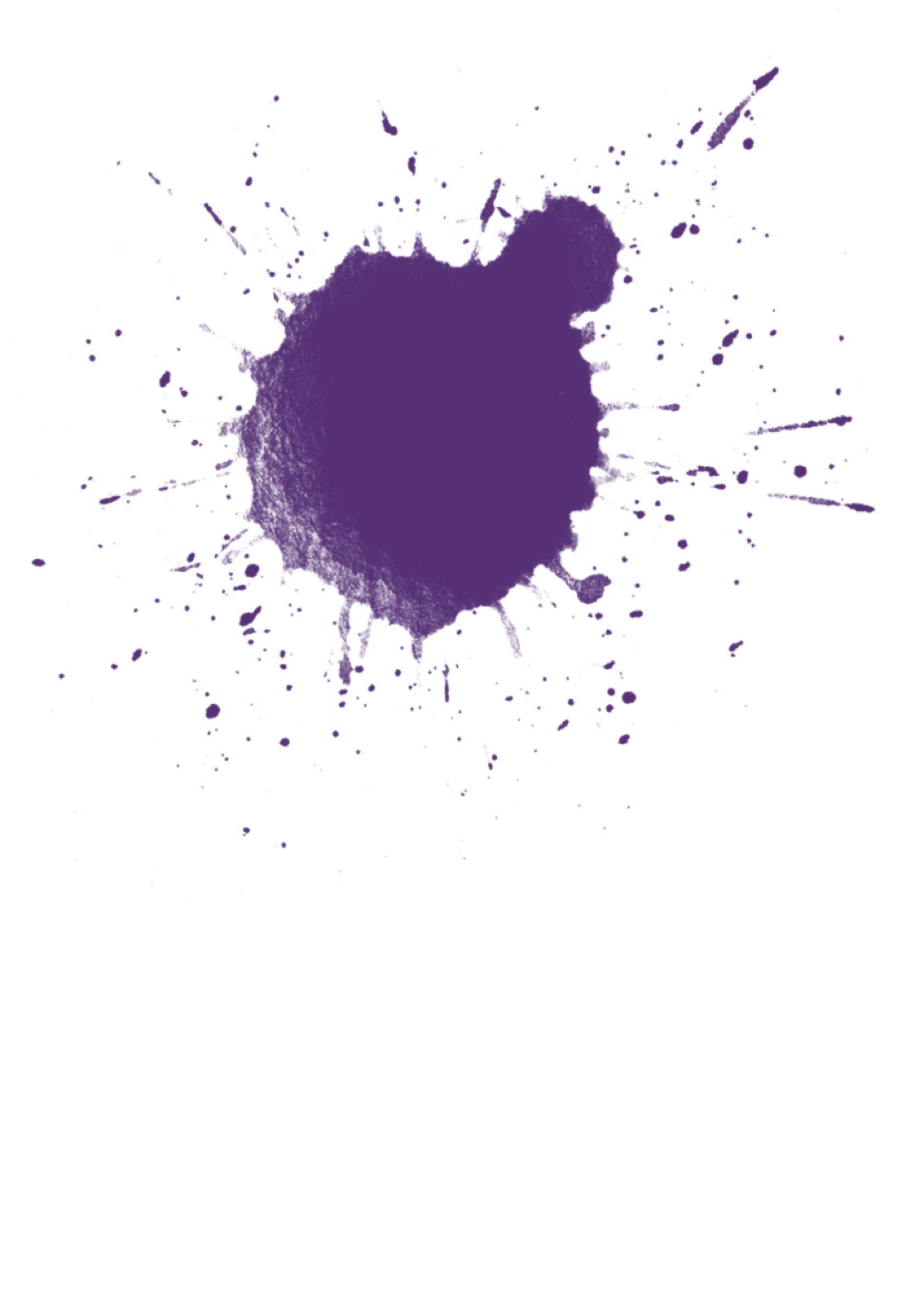

Here’s the thing about watercolor, if you weren’t aware: You can only add color; you can’t subtract. So all those white spots and the thousands of snowflakes can’t be painted with watercolor, they must be painted around to let the lighter canvas show through. Unless you cheat, of course.
One way of cheating is by using a mask. Masks are created by painting something akin to rubber cement onto the paper, painting on top of it, and then pealing the mask off to reveal the paper that it protected. This is the approach I had intended to use with the polar bear.
My vision was to spray the masking fluid or flick it off the edges of a brush to create the fine, dense snow pattern. Unfortunately when I tried, the masking fluid would just stick to anything it touched and the best I could get was a bubbly dribble instead of a spray. For the two polar bears above, I wound up painting each individual snow flake with masking fluid. The effort was great, but the results were not.
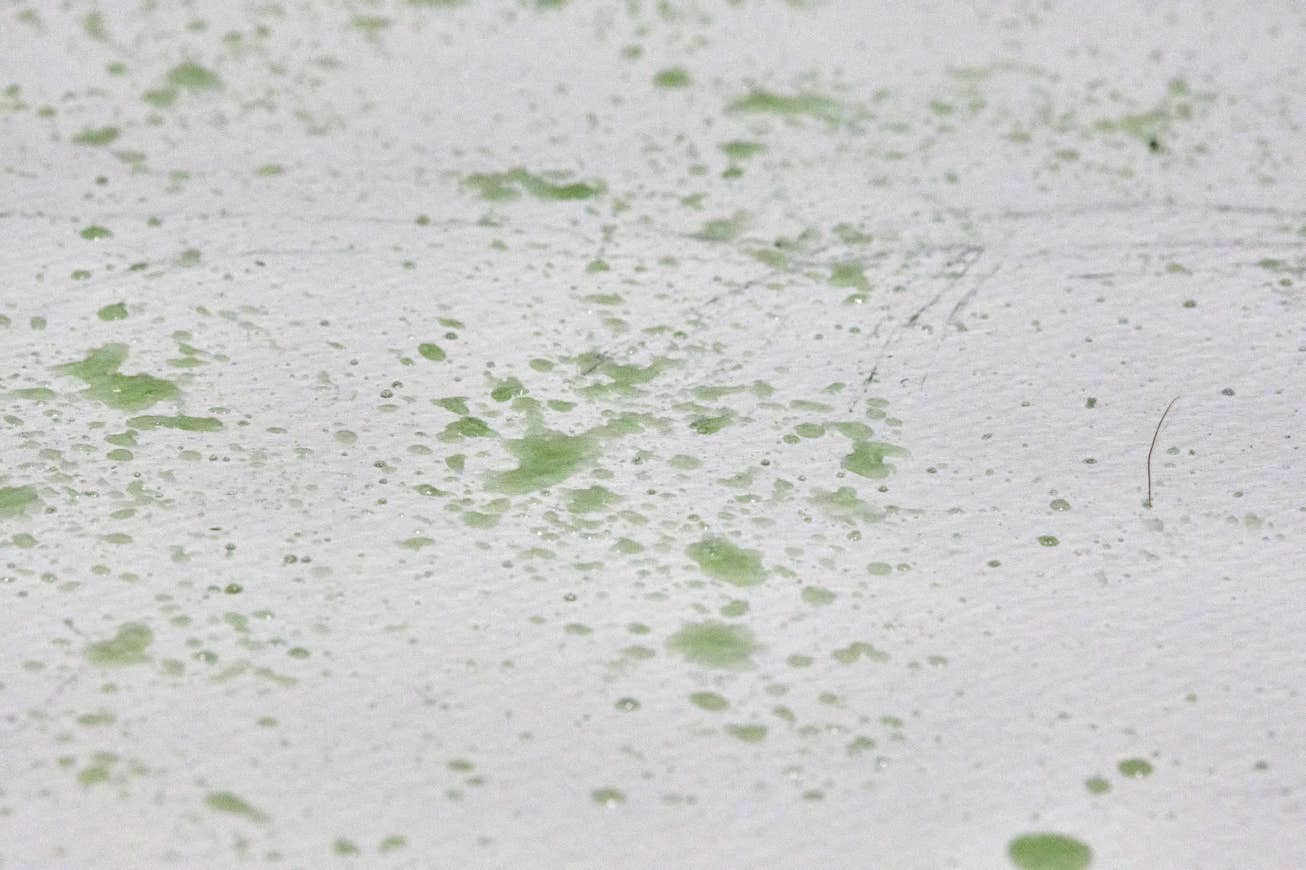
Masking fluid pattern flung from a palette knife.

Unfortunately the palette knife tended to produce clumps of masking fluid. The resulting snow spray looked more like white fireworks. Bear version 3 wound up with a strangely blissful expression, and the background was a monotonous duotone blob.
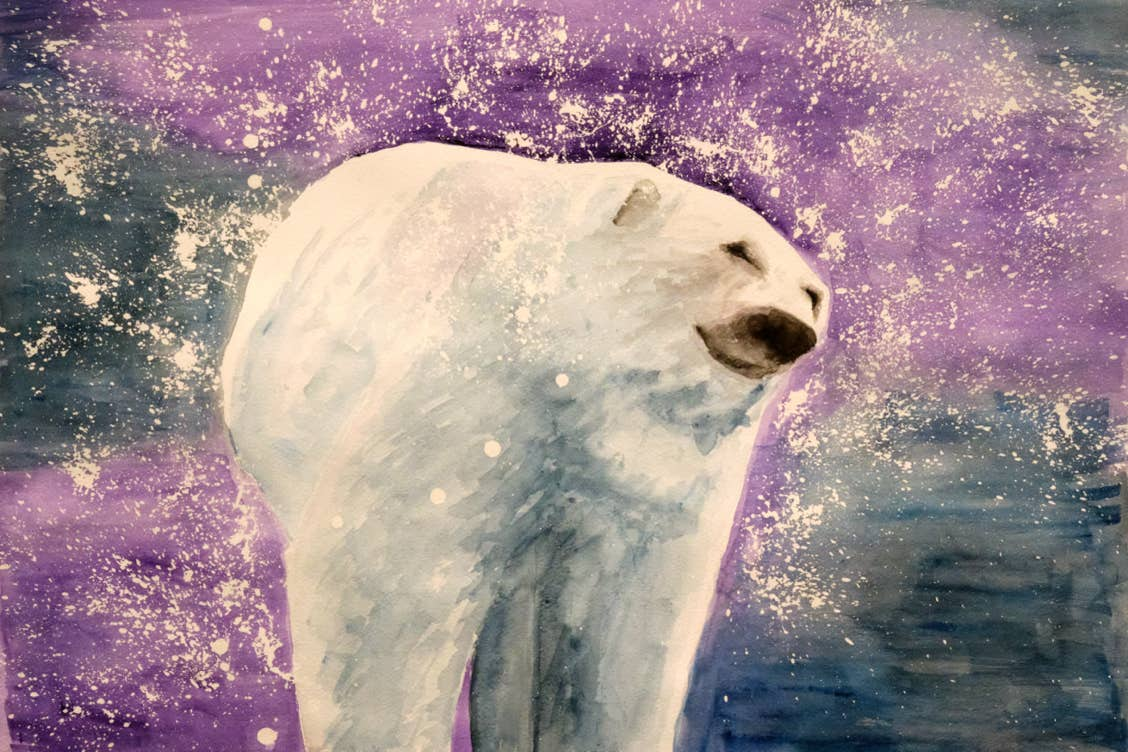
Drugged polar bear enjoying a psychedelic fireworks experience.
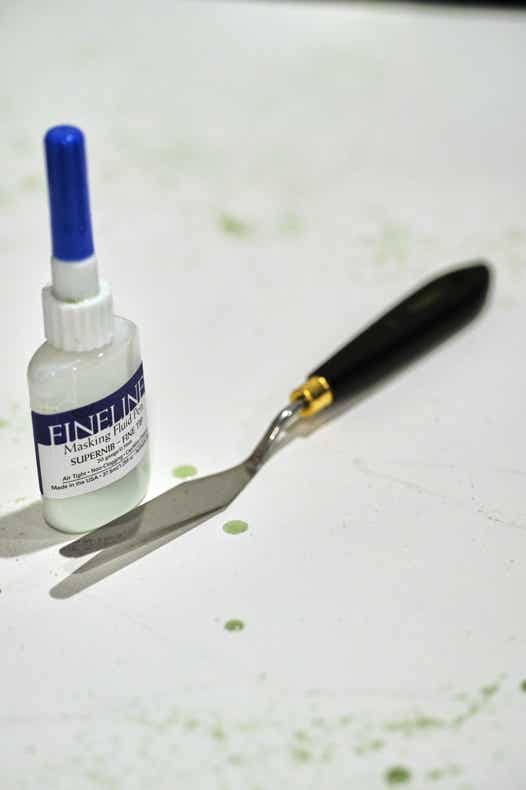
Masking fluid and palette knife.
One day as I stared across my work table, it occurred to me that a palette knife might make an excellent masking fluid catapult. At first it seemed to work pretty well.
The Golden Compass film was my first exposure to Pullman’s work, although I have read all the original novels since then. Anyone exposed to the story will remember the polar bear named Iorek Byrnison, voiced by Sir Ian McKellen in the film. Over the years John’s photo and Pullman’s character conflated in my mind to the point that I started calling the painting Iorek. The polar bear likeness has not escaped others, as I have been asked if the bear represents Iorek Byrnison.
For the final version of Iorek, I made a few changes.
First, I changed the background to a splash effect to add a little more character. Plus they are fun to make.
Second, I used a larger masking fluid catapult— one more appropriate to the paper size. In the United States we have a right not to incriminate ourselves, so I’d rather not be specific about the tool used. Let’s just say that the dishwasher did a great job, nobody seems to have gotten ill, and leave it at that.
Lastly, I made sure Iorek had a fierce expression.
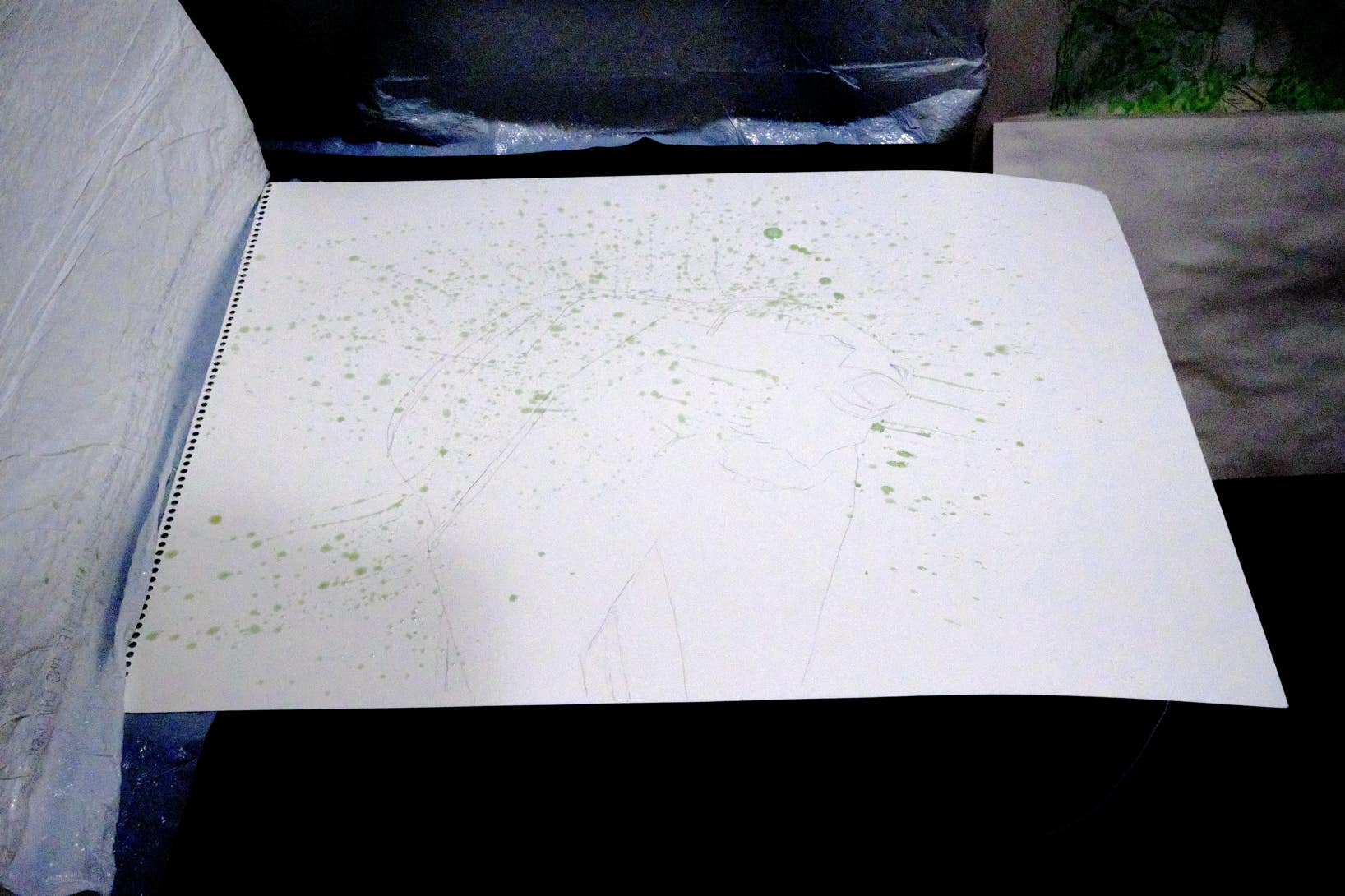
My “splatter studio” after flinging masking fluid with…. something big not from the kitchen.
In late 2019, BBC One and HBO released the first season of His Dark Materials adapted for television. HBO has a reputation for pushing boundaries with edgy material that others might pass on, so it was a good partner for Pullman’s work. With a larger temporal space to tell the story, and with Pullman as an executive producer, the series was able to remain faithful to the original writing and received favorable reviews.

Since HBO gave Iorek another chance on screen, so did I. With my last sheet of Iorek-sized paper, I made another.
Did you enjoy this post?